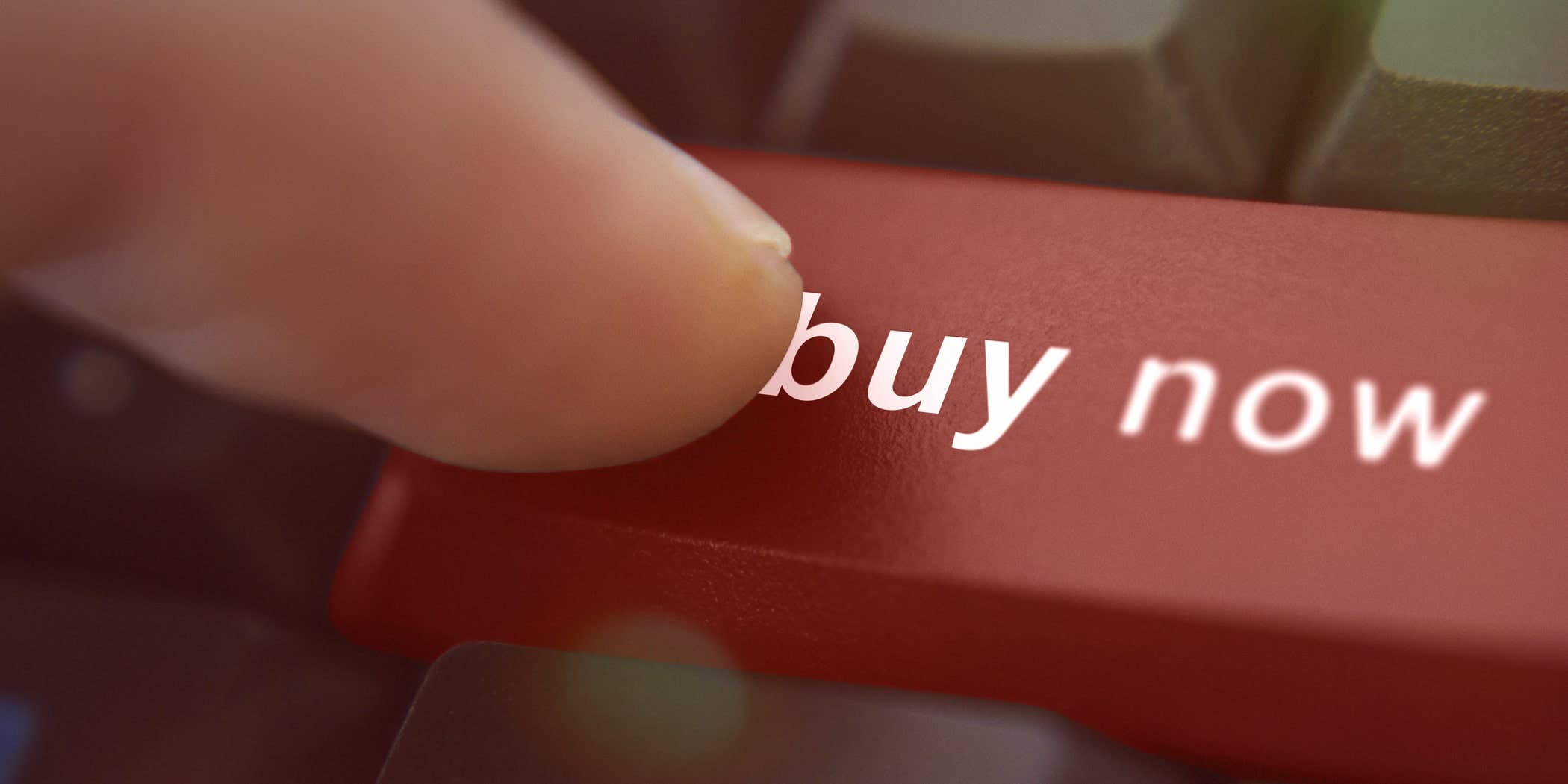Keskustele Avan – tekoälykonsulttisi – kanssa
Hei, olen Ava, tekoälyoppaasi yrityksesi tehostamiseen!
Onko sinulla jo yritys tai haaveiletko sellaisen perustamisesta, autan sinua toteuttamaan visiosi tekoälyä hyödyntävien freelancerien avulla. Jaa liiketoimintatavoitteesi, niin luomme yhdessä projektin, josta lahjakkaat freelancerinamme voivat tehdä tarjouksen. Tehdään visiostasi totta!
Minulla on yritys
Olen perustamassa yritystä
Jokin meni vikaan keskustelun lähetyksessä sähköpostiisi. Yritä myöhemmin uudelleen.
Voit tallentaa keskustelun vain kerran tunnissa. Yritä myöhemmin uudelleen.
Keskustelusi on liian lyhyt. Jatka chattailua Avan kanssa tallennuksen mahdollistamiseksi.
How to build an effective sales funnel for your website
Bring visitors to your site, turn them into leads and turn those leads into paying, loyal customers by building your sales funnel
13.1.2020 • 7 minuuttia lukuaika

Content Writing | Designing | Web Development
Kopiointi leikepöydälle epäonnistui. Yritä uudelleen, kun olet muuttanut käyttöoikeuksiasi.
Kopioitu leikepöydälle.

Turn strangers into loyal customers by building out your sales funnel
So you’ve got your website all set up.
You’ve used the latest technology and made it responsive. You’ve utilized the best design trends and are sure that customers will soon be flocking to your web property. And you’ve created the best content in the world (come on, be honest, everyone claims they have the best content) to rope in the prospects.
You set it all up, roll out the red carpet, and then…wait.
And wait…
And wait…
And get nothing! You’re just not selling any products or services. What could be the problem? Why are you falling behind when others who started with you are killing it?
Maybe it’s happening because you didn’t build the right sales funnel for your website?
Stop right there! What’s that?
If you asked this question right now, then you’ve come to the right place. In this article we're going to give you the lowdown on what a sales funnel is, and how you can create the perfect one for your website.
So, let’s dive into the funnel headfirst.
What is a sales funnel?
In the simplest of terms, a sales funnel is the exact route that visitors to your website take from landing onto your website to making that coveted purchase. Sales funnels are meant to guide site visitors along the path to a successful sales conversion.
But then why not call it the sales path instead of the funnel?
The answer lies in the nature of the path itself. Just think of the shape of a real-world funnel: it’s wider at the top, and goes on to become increasingly tapering at the bottom. This simply means that while the amount of material it can collect at the top is large, at any point of time, only a limited quantity of the funnel traffic passes out through the other end.
The same is true for sales funnels. A large number of potential customers are going to interact with your website at the beginning (the top of the funnel), but not all of them are going to come out the other end as paying customers.
Now it is up to you, as the business owner, to create a journey that can guide and nurture the prospects coming in at the top of the funnel to complete their journey down the path and come out as successful converts at the other end.
Typically, a sales funnel is thought to have five stages. These are explained as below:
Awareness
This is the stage when your customers are first hearing about your business or website.
Attraction
At this stage you need to create situations such that the leads that are already on your website can begin to interact and engage with your offerings.
Interest
At this stage you fuel the desire of your prospects to show that you can fulfill their needs exactly. This stage is further down the funnel and means that your leads are close to converting.
Purchase
That all important stage: the prospect becomes a customer! Now you know that they have committed to your product or service.
But wait.
It doesn’t end here.
Delight and Re-engage
Perhaps more important than the previous stage, this lowest part of the funnel ensures that your customers become loyal patrons and always come back for more.
While in a brick and mortar store the entire funnel is implemented through physical employees and display organization, in the online world your website is your 24-hour sales rep.
So, you have to build the right sales funnel to get the desired converts.
And this is how you do just that.
How to create a sales funnel that’ll rock your world
One truth should be made clear at the very outset: sales funnels are not difficult, but there’s no one-size-fits-all solution when it comes to creating one for your business. Every business has its own requirements, and you should optimize your sales funnel based on those requirements.
Further, creating a sales funnel is not a one-and-done exercise; you need to constantly revise and revamp your funneling efforts to ensure that the desired flow of leads-to-customer conversions never slow down to a trickle.
With that said, let’s take a look at this simple six step formula that you can follow to set up an effective sales funnel for your website.
Step 1: Define and research your audience
They say that the first step is the most crucial, and here we mean it. Before you set about actually optimizing your site for the sales funnel, you need to know who your funnel is meant for.
After all, not everyone in the world is going to be your customer, and you should target the particular demographic that's best suited for the products and services that you offer. This is vital to the success of the funnel you're about to set up.
Think about it: are you targeting B2B or B2C? What is the age group and geographical region you want to focus on? What are their interests, income levels, etc., etc., etc.?
Now this "et cetera" is very important, and it's here that you must insert your business specific parameters. Once you know your audience and their buying habits, the next steps become relatively easier.
Step 2: Optimize your landing page
Once you have that all-important information about your target audience, next it’s time to spruce up your website landing page according to their tastes. Different demographics naturally have different preferences, and you can’t expect to win them all using the same generic website.
Take time to create uniquely attractive landing pages for your target demographics. Your landing page represents your first impression; and in the case of websites, it can often be the last. So make sure your prospects don’t bounce away from the first page they land on.
And that’s where the next step comes in.
Learn how to optimize your landing page for conversion
Step 3: Make an initial offer
Remember the attractive discounts that lure you to the storefronts? Well, here you need to make a similar offer that gets the customers attracted to consider your products or services. Don’t just go about blandly listing everything you have to sell.
Take the trouble to make it enticing, irresistible and downright drool-worthy. Once you’ve got that down perfectly, you're ready to showcase your main offerings and also create the mental map that’ll prepare them to go for the next offer in the offing.
Step 4: Be ready to upsell
How many times have you downloaded that free antivirus, only to purchase the entire online protection suite? Well, those were offers that you just couldn’t refuse, right? This, my dears, is another part of the sales funnel technique called upselling.
When you realize that a customer has bought, or is ready to buy one or more of your offerings, then you simply offer them an upgrade. This can be in the form of a better product or a more comprehensive service package, based on your business.
The purpose of an upsell is to provide customers with an item of greater value. This naturally gets the buyer interested in the upgraded product as it provides them with an enhanced utility. And for you, this means a more substantial sale value; upsell items are obviously going to be costlier.
Step 5: Don’t hesitate to offer discounts
At this stage, the customer has advanced pretty low along the funnel. But you’re not out of the woods yet, for they haven’t made that all important BUY NOW click. So now you entice them with the opposite of an upsell: offer additional discounts. This is meant for those customers who are hesitating to make the purchase due to budget constraints.
Offering prospects the chance to buy at discounted rates allows you to convert them into paying customers. And create the scope for them to come back later and make further purchases.
Step 6: Reward your fans
Everyone likes that extra attention. And if you can make your customers feel special then they're bound to return for more business. Make sure your customers are happy with their purchases. Ask for their valuable feedback, and be ready to respond to any queries or problems they might be facing.
Also, make sure you keep in touch with your customers through follow-up offers, loyalty programs and exclusive services. This way, you stand to remain on top of your customers’ minds. So the next time they're in need they’ll come straight to you.
Now that you’ve guided your customers down the funnel successfully, go back to the top, lather, rinse and then repeat the process for the next customer stream. Make sure your funnel activity is a never-ending cycle on your website. That way, you can rest assured that you’ll never run out of quality customers for your business.
Final words
So now you know how to create the perfect sales funnel for your website. Applying the above principles diligently will allow you to create an online sales experience that appeals to your target demographics.
Remember the initial caution though: no two businesses are created equal, and in order to succeed you need to make sure that your sales funnel has been optimized according to the parameters that define your business.
At last, we’d like to stress one point that bugs many entrepreneurs starting out: why do you need a sales funnel? Why not just show the customers all that you sell, and let them make the choice?
Well, consider this.
On any journey, you’d be lost without a map. Unless you had signs by the road guiding you you’d end up getting nowhere. The sales funnel just guides your customers to their desired destination on your website.
So don’t wait and get funneling.
Kerro, mitä haluat tehtävän
Kirjoita projektisi nimi
Aiheeseen liittyviä tarinoita
Keskustele teknisen kartturimme (Technical Co-Pilot) kanssa saadaksesi apua projektissasi
Sinulle suositellut artikkelit

Getting people to your website is one thing. Getting them to convert into customers is quite another. Learn how to turn your site into a sales machine
7 min read

Your call to action (CTA) is your primary selling point, but few know how to leverage their potential. Learn how to get it right and get results.
6 min read

Get more traffic, more conversions and more money with sizzling landing page copy. Follow our guide to learn how to write delicious landing page copy.
4 min read

Freelancers can be an incredible asset for startups. Learn how to manage them for maximum effectiveness
6 min read
Kiitos! Olemme lähettäneet sinulle sähköpostitse linkin, jolla voit lunastaa ilmaisen krediittisi.
Jotain meni pieleen lähetettäessä sähköpostiasi. Yritä uudelleen.
Ladataan esikatselua
Lupa myönnetty Geolocation.
Kirjautumisistuntosi on vanhentunut ja sinut on kirjattu ulos. Kirjaudu uudelleen sisään.




